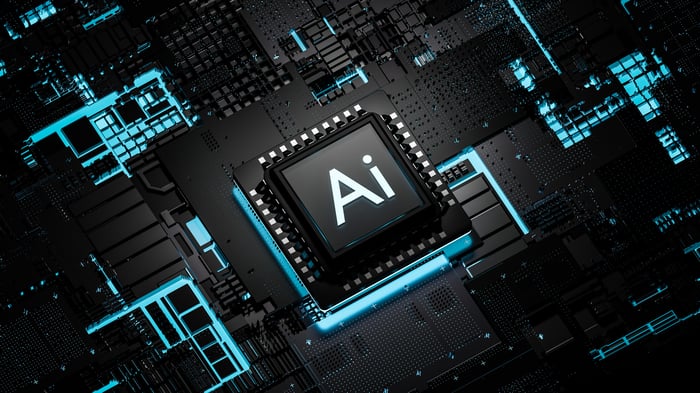The U.S. economy has consistently produced the world's most valuable companies, but the industries leading the way tend to change over time.
For example, United States Steel became the first $1 billion company on the planet in 1901. But it has only grown to a $5.5 billion valuation in the 122 years since then, with hundreds of other companies leaving it in the dust. That's because the domestic steel industry is no longer crucial to the U.S. economy; in many cases, it's cheaper to import the metal from other countries.
Today, the technology sector is the dominant value creator. In 2018, Apple became the first company in the world to amass a $1 trillion valuation and it now sits at the $3 trillion mark. Apple has since been joined in the $1 trillion club by Microsoft, Amazon, Google parent Alphabet, and most recently semiconductor giant Nvidia.
But there's another tech company with $1 trillion potential: Oracle (ORCL -0.61%). Let's see why.
A leader in innovation since the start
Oracle was founded in 1977 under the name Software Development Laboratories, and it produced its first-ever relational database management software called Oracle soon after. The company officially became Oracle Software in 1982, adopting the name of its flagship product following its incredible success.
Businesses relied on Oracle's software to handle their vital data as they demanded tools that would enable them to synchronize and even migrate it (these were major challenges four decades ago).
Not only did Oracle deliver, but it also continued to think several steps ahead and prepared its customers for the internet age as the 1990s dawned. In 1993, it became the first company to automate business processes using a centralized data center -- does that sound familiar?
Today, almost every business in the world uses cloud services, which rely on centralized data centers. They can host websites or even build software without having to invest significant amounts of money in the infrastructure hardware; they can simply rent it from a company like Oracle, which officially launched Oracle Cloud Infrastructure in 2016 to better address its customers' needs.
Now, it offers dozens of ready-made cloud-based software applications serving every industry, including retail, healthcare, and financial services. That's exactly where AI fits into the picture, because the technology is being used to automate crucial business processes to save companies time and money -- and it all starts in the data center.
Oracle has several deals with Nvidia, including one signed in late 2022 for tens of thousands of its A100 and H100 data center chips designed for AI workloads. They help Oracle's business customers access accelerated computing, and Chairman Larry Ellison says the company's infrastructure has the highest-performance and lowest-cost graphics processing unit (GPU) cluster technology in the world.
How AI is helping drive Oracle forward
Oracle's infrastructure is so good that even Nvidia is a customer for its own AI needs. In March of this year, Nvidia selected Oracle as the first hyperscale provider of its cloud-based AI supercomputer called the DGX. Cloud providers like Oracle effectively serve as distributors for Nvidia's technology, enabling the chipmaker to access millions of businesses around the world without having to build its own customer base of end users from scratch.
Oracle's Gen2 Cloud is now the No. 1 choice for enterprises developing generative AI applications, because it allows them to scale up to 32,000 GPUs of computing power. By comparison, Amazon Web Services recently signed a deal that will enable customers to scale up to a less-impressive 20,000 GPUs.
As a result, in the recent fiscal 2023 fourth quarter (ended May 31), Oracle said more than 30 AI development companies had signed contracts to collectively purchase $2 billion worth of capacity in the Gen2 Cloud.

Image source: Getty Images.
Oracle's (mathematical) path to a $1 trillion valuation
Oracle stock has surged almost 40% this year alone, and it's currently trading near an all-time high. Based on the company's $50 billion in fiscal 2023 revenue and its $316 billion valuation, the stock now trades at a price-to-sales (P/S) ratio of 6.3.
Assuming that P/S ratio remains constant in the future, Oracle will have to grow its annual revenue to $159 billion to justify a $1 trillion valuation. It could get there by 2033 if its revenue increases by just 12.3% per year between now and then.
Oracle listed on the stock market in 1986 with revenue of just $55 million, which means it has grown at a compound annual rate of 20.5% since then -- that's an impressive 37-year track record that suggests the company is certainly capable of delivering. In fiscal 2023, it actually grew revenue by 22% on a constant currency basis, which was above the trend.
AI was a key contributor to that outperformance, and considering the value estimates floating around for this new, emerging industry, there's potential for an acceleration in Oracle's growth in the coming years. Cathie Wood's Ark investment Management, for example, thinks AI will create $90 trillion in enterprise value for software companies by 2030, so the company only needs to capture a market share of less than 1% to catapult it to a $1 trillion valuation.
Oracle has a real shot at joining Apple, Microsoft, Amazon, Alphabet, and Nvidia in the $1 trillion club, and if it does, investors who buy the stock today will more than triple their money along the way.





